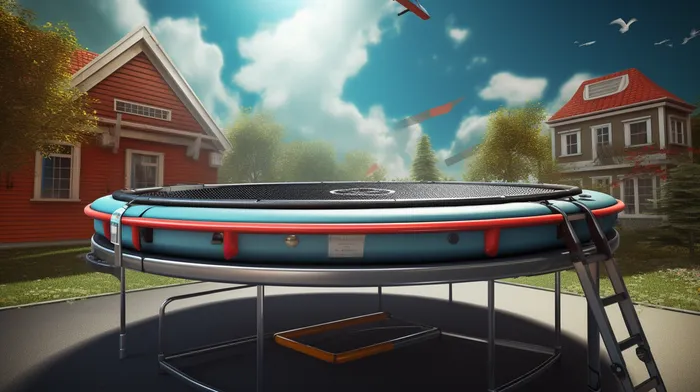Do you know that trampolines are responsible for sending thousands of kids to the hospital every year causing a wide range of severe injuries? Medical experts estimate that in 2009, the latest year that was measured, around 98,000 trampoline-related injuries occurred. Astonishingly, that represents 10 trampoline injuries every hour of every day. And 3,100 of those mishaps resulted in hospitalizations. In other words, eight kids are ending up in the hospital every day because of trampolines.
Why The Risk?
You may be wondering, “Why are trampolines so dangerous?” Trampolines pose several risks, such as falling off the trampoline, colliding with another person, landing improperly, or getting limbs caught in the springs, which can result in injuries like broken bones, sprains, head injuries, and even paralysis.
The American Academy of Pediatrics (AAP) strongly discourages the use of home trampolines. Susannah Briskin, M.D., assistant professor of pediatrics at Case Western Reserve University School of Medicine, explains that these trampolines bear significant injury risk, especially when children perform somersaults or when multiple jumpers are on the mat at one time.
Age Matters
Younger children are particularly at risk for trampoline injuries because their bones are still developing and may be more prone to fractures. Children under the age of six should not be allowed to use a trampoline, according to AAP.
Safety Guidelines
If you decide to have a trampoline at home, there are several safety guidelines you should follow to minimize the risk of injuries:
- Supervise all trampoline activities: An adult should always be present while children are using the trampoline to ensure that they follow proper safety rules.
- One person at a time: To avoid collisions and other accidents, only allow one person to jump on the trampoline at any given time.
-
No flipping or somersaults: Discourage children from performing flips, somersaults, and other risky stunts, as these can lead to serious head and neck injuries.
-
Use safety pads: Ensure that you have safety pads in place covering all the springs and the frame of the trampoline. These can help prevent injuries caused by falls or limbs getting caught in the springs.
-
Have a safety net or enclosure: Installing a safety net or enclosure around the trampoline can prevent children from falling off and suffering severe injuries.
-
Inspect the trampoline regularly: Regularly check the trampoline for any wear and tear, such as damaged springs, ripped jumping mat, or worn-out pads. Replace any damaged parts promptly to maintain the trampoline’s safety.
-
Proper positioning: Place the trampoline on a level surface and ensure that there is plenty of space around and above it. Keep the trampoline away from walls, fences, and other structures that a child might collide with if they fall off.
-
Establish rules: Teach your children the rules for trampoline use, such as no pushing, no jumping onto or off the trampoline, and not using it when it’s wet, to ensure that they understand the importance of using the trampoline safely.
Safer alternatives
While trampolines can provide fun and exercise for children, there are many safer alternatives available, such as playing organized sports, riding bicycles, or visiting indoor trampoline parks. These activities can still offer an element of excitement and adrenaline while being considerably less risky than using a home trampoline.
Conclusion
In conclusion, trampolines pose a significant risk to children, with thousands of kids ending up in the hospital due to trampoline-related injuries. While proper safety measures can help minimize these risks to some extent, parents should seriously consider other outdoor activities that are much safer for their children. If you do decide to have a trampoline at home, be sure to follow all safety guidelines and closely supervise all trampoline use, as prevention is vital to help keep children safe and injury-free.



